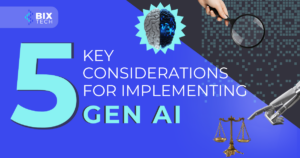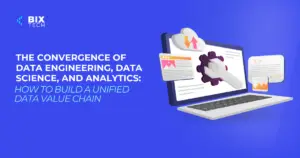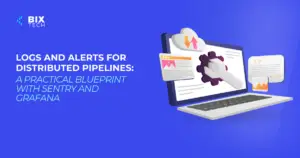Real-World Applications of Computer Vision: How Businesses are Transforming Operations with AI

Sales Development Representative and excited about connecting people
Computer vision is no longer just a buzzword in the tech industry—it's a transformative technology that is revolutionizing how businesses operate, make decisions, and deliver value to their customers. From automating quality control on factory lines to enhancing customer experiences in retail, computer vision is at the heart of digital transformation for modern enterprises.
In this comprehensive blog post, we'll dive into what computer vision is, explore practical case studies across industries, and outline actionable ways your business can leverage its power today.
What Is Computer Vision?
At its core, computer vision is a subset of artificial intelligence (AI) that enables computers to interpret and understand visual information from the world. By mimicking human sight, computer vision algorithms can analyze images, videos, and real-time feeds to identify objects, track movements, and extract meaningful insights.
Unlike traditional image processing, computer vision uses advanced machine learning and deep learning techniques to recognize complex patterns, enabling automation and data-driven decision-making across industries.
Why Computer Vision Is a Game Changer for Business
The business benefits of computer vision are vast and growing:
- Automation: Reduce manual labor and human error in repetitive, visual tasks.
- Efficiency: Speed up processes like inspection, sorting, and monitoring.
- Data Insights: Gain granular, real-time data from visual sources.
- Cost Savings: Lower operational costs by optimizing workflows.
- Enhanced Customer Experience: Personalize services and improve safety.
Let's look at some real-world use cases to illustrate these advantages.
Computer Vision in Action: Case Studies Across Industries
1. Manufacturing: Quality Control and Defect Detection
In manufacturing, product quality is paramount. Traditionally, quality control relied on human inspectors—a process prone to fatigue and inconsistency. Today, computer vision systems equipped with high-resolution cameras and AI algorithms scan products on assembly lines, instantly flagging defects such as scratches, misalignments, or missing parts.
Example:
A leading electronics manufacturer implemented a computer vision-based inspection system that reduced defect rates by 40% and increased throughput by 25%. The AI system learns from each inspection, continuously improving its accuracy.
Learn more about how AI and data science are revolutionizing businesses.
2. Retail: Customer Experience and Inventory Management
Retailers are leveraging computer vision to optimize everything from store layouts to personalized marketing. In-store cameras analyze customer movement patterns, enabling retailers to place high-demand products in strategic locations. Facial recognition and emotion detection can also tailor offers in real time.
Example:
A global retail chain used computer vision to automate shelf inventory checks. By continuously monitoring stock levels, they reduced out-of-stock incidents by 30% and improved customer satisfaction.
3. Healthcare: Diagnostic Imaging and Patient Monitoring
Computer vision is making waves in healthcare, particularly in medical imaging and patient monitoring. AI-powered systems can detect anomalies in X-rays, CT scans, and MRIs with accuracy that rivals or exceeds human radiologists.
Example:
Hospitals are implementing computer vision tools to monitor patient movements, reducing fall incidents in elderly care units. This not only enhances patient safety but also streamlines nurse workflows.
4. Agriculture: Precision Farming
In agriculture, drones equipped with computer vision analyze crop health, detect pests, and optimize irrigation. This targeted approach reduces resource waste and increases yields.
Example:
A farm cooperative adopted drone-based vision systems to monitor vast fields, identifying areas needing attention and enabling precise application of fertilizers and pesticides.
5. Security and Surveillance
Security systems powered by computer vision can recognize faces, detect unusual behaviors, and monitor restricted zones in real time.
Example:
A logistics company uses AI-enabled cameras to monitor warehouses, automatically flagging unauthorized access and ensuring compliance with safety protocols.
Key Technologies Powering Computer Vision
To achieve these results, businesses rely on a range of tools and models, including:
- Convolutional Neural Networks (CNNs) for image classification and object detection
- Optical Character Recognition (OCR) for extracting text from images
- Edge Computing for processing data locally and enabling real-time analysis
- Deep Learning Frameworks such as TensorFlow and PyTorch for flexible model development
Want to understand more about the technology behind computer vision? Read our guide on what convolutional neural networks are and how they work.
How to Start with Computer Vision in Your Business
Ready to explore computer vision for your own organization? Here are practical steps to get started:
1. Identify High-Impact Use Cases
Begin by assessing where visual data plays a critical role. Examples include product inspection, safety monitoring, or process automation.
2. Collect and Prepare Data
High-quality, labeled data is essential for training computer vision models. Consider starting with a pilot project to demonstrate value before scaling up.
3. Choose the Right Technology
Select frameworks and hardware that align with your business needs. Cloud-based solutions can offer scalability and ease of deployment.
4. Partner with AI Experts
If your team lacks AI expertise, consider partnering with a technology provider experienced in computer vision. This ensures a smoother implementation and faster time-to-value.
The Future of Computer Vision: What's Next?
The evolution of computer vision is accelerating, with new applications emerging every year. As edge computing and generative AI become mainstream, expect even greater real-time capabilities and smarter automation.
Forward-thinking businesses that embrace computer vision today will gain a competitive edge—streamlining operations, delighting customers, and uncovering new growth opportunities.
For more inspiration on how AI is transforming industries, check out our post on how artificial intelligence is shaping the business world.
Final Thoughts
Computer vision is reshaping the landscape for businesses across every sector. By automating visual tasks, unlocking actionable insights, and enhancing operational efficiency, companies can future-proof their operations and lead their industries into the digital age.
Are you ready to take the next step? Start small, focus on high-impact areas, and leverage the power of computer vision to drive innovation in your business.
Explore more about the intersection of AI, computer vision, and business growth on our blog. The future is visual—make sure your business can see it coming.









